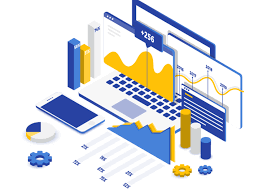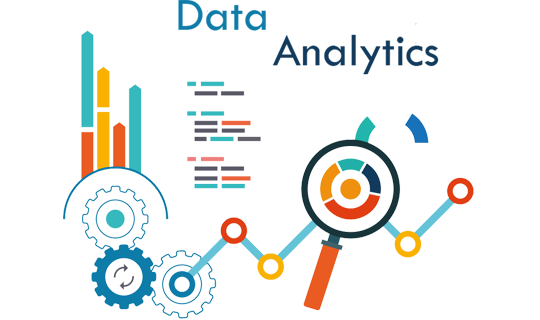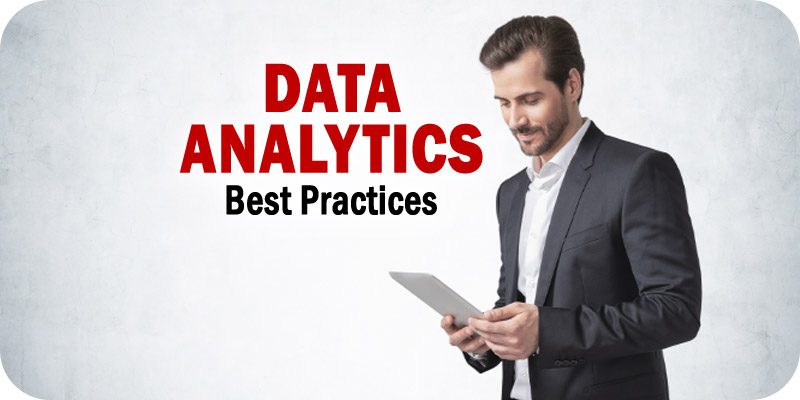
Data and its Analysis:
Analytics is the systematic computational analysis of data or statistics. It is used for the discovery, interpretation, and communication of meaningful patterns in data. It also involves applying data patterns for effective decision-making.

Organizations can apply analytics to business data to describe, predict, and improve business performance. Specifically, areas within analytics include descriptive analytics, diagnostic analytics, predictive analytics, prescriptive analytics, and cognitive analytics.
Because analysis may require extensive calculations (see big data), the algorithms and software used for analysis take advantage of the most current methods in computer science, statistics, and mathematics. According to International Data Corporation, global spending on big data and business analytics (BDA) solutions is estimated to reach $215.7 billion in 2021. According to Gartner, the overall analytics platform software market grew by $25.5 billion in 2020.
A successful data analytics practice can (should) provide a better strategy for where you can take your business. When done right,
So the data analytics can help you:
- find trends
- Discover opportunities
- Predict actions, triggers, or events
- Take decisions
Applications of Analytics:
-
Marketing optimization
-
People analytics
-
Portfolio analytics
-
Risk analytics
-
Digital Analytics
-
Security analytics
-
Software analytics
Processes in data analytics:
The practice of data analytics encompasses many separate processes, which may comprise a data pipeline:

- Collect and ingest the data.
- But do Categorize data into structured/unstructured forms, which could also define the next actions.
- Manage data, typically in databases, data lakes, and/or data warehouses.
- Storing data in hot, warm, or cold storage
- Perform ETL (Extract, Transform, Load)
- Analyze data to extract patterns, trends, and insights.
- Share data with business users or consumers, often on a dashboard or through dedicated storage.
Data Analysis:
Consider data analytics as a slice of the data analytics pie. Data analysis involves cleaning, transforming, modeling, and interrogating data to find useful information. (Other portions are generally accepted to be other activities, from collection to storage to display.)

The act of data analysis is usually limited to a single set of ready-made data. You will inspect, organize, and question data. Today, in the 2020s, a software or “machine” typically performs a first round of analysis, often directly into one of its databases or tools. But this is reinforced by a human investigating and interrogating the data with more context.
- Give others access to data
- Present the data (ideally with data visualization or storytelling)
- Suggest actions to take based on the data.
Type of data analysis:
There are many types of data analysis techniques. Here are the best-known:
-
Text analysis: This is also known as Data Mining. This method discovers a pattern in large data sets using databases or other data mining tools.
- Statistic analysis: This analysis answers “What happened?” using previous data in panel form. Statistical analysis involves the collection, analysis, interpretation, presentation, and modeling of data.
- Diagnostic analysis: This analysis answers “Why did it happen?” searching for the cause based on knowledge discovered during statistical analysis. This type of analysis is beneficial for identifying patterns of data behavior.
- Predictive analysis: This analysis suggests what is likely to happen using past data. Predictive analytics makes predictions about future outcomes based on data.
- Prescriptive analysis: This type of analysis combines knowledge from textual, statistical, diagnostic, and predictive analysis to determine the actions to take to solve a current problem or influence a decision.
Key differences between data analytics and data analysis:
Data Analytics:
- Data analytics is a traditional or generic type of analysis used in businesses to make data-driven decisions.
- It has one or more users and generally consists of data collection, data validation, and data visualization and inspection.
- It consists of numerous stages such as data collection and business data inspection.
- Processes data using various technologies such as Tableau, Python, Excel, Google Analytics, and others.
- This does not lend itself to descriptive analysis.
Data Analysis:
- Data analytics is a specialized type of analysis used in businesses to evaluate data and obtain insights.
- It involved defining the data, investigating it, cleaning it, and modifying it to obtain a useful result.
- Here, to process data, the raw data must first be defined in a meaningful way before the relevant information can be retrieved through data cleaning and conversion.
- Analyse data using many tools like SPARK, Google Fusion tables, Node XL, Excel, etc.
- Data analytics is a specialized type of analysis used in businesses to evaluate data and obtain insights.

Leave a Reply